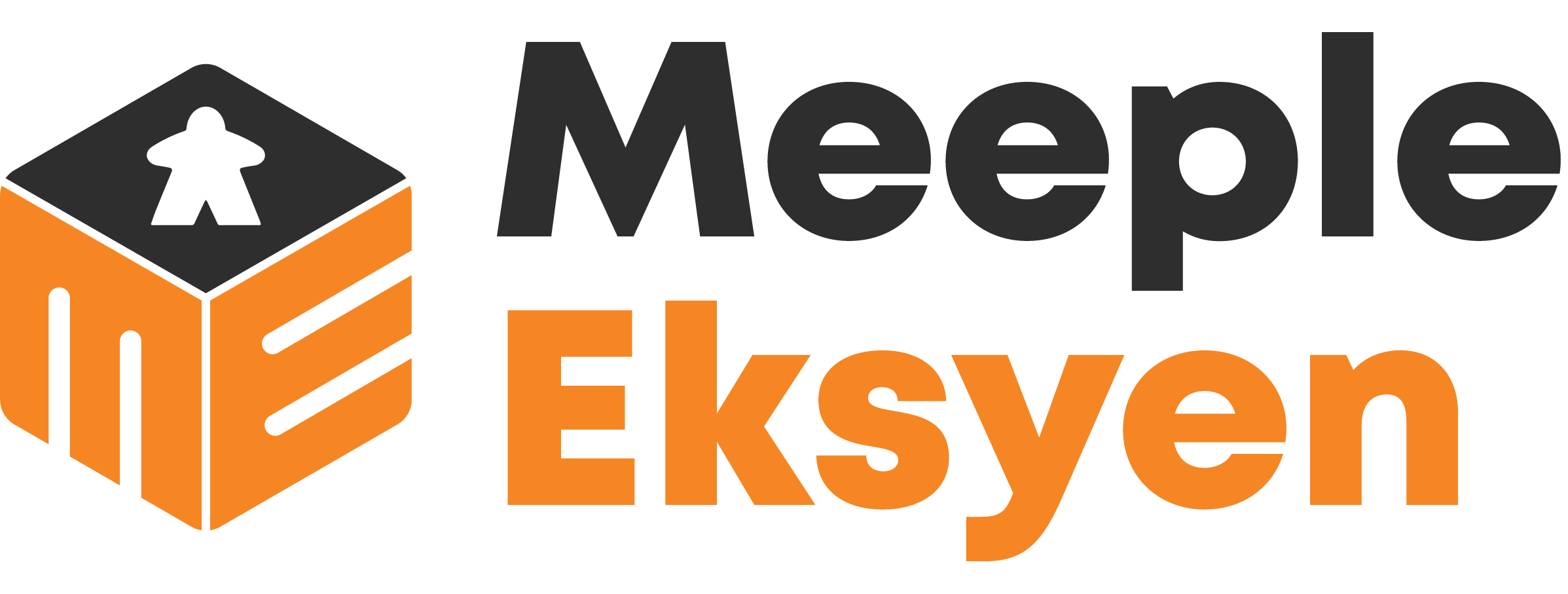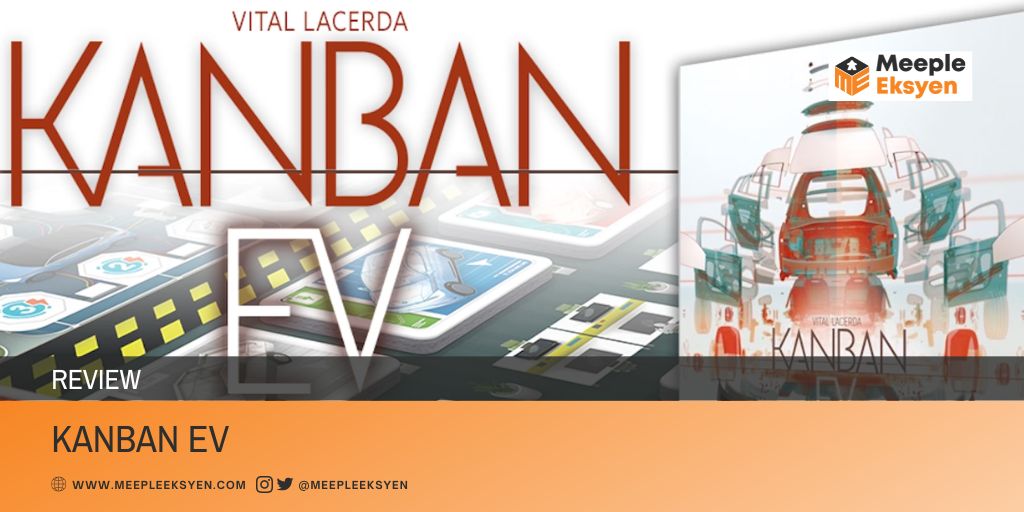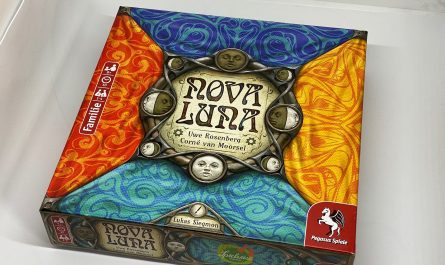As a reimplementation of an old game with similar name (minus the EV), Kanban EV was a successful Kickstarter project from a few years ago. Vital Lacerda is still the lead designer for this re-design. The new game gets several changes and modifications to brush it up for the modern market.
The history of kanban stretches even to World War II in UK. This stock replenishment signal was first implemented in the military aircraft factory. Taiichi Ohno, an industrial engineer at Toyota, then honed the system to perfection, leading this automotive giant to achieve lean manufacturing. The word kanban (カンバン, 看板) itself means billboard or signboard.
The background story of the predecessor is about efficiency in the car factory — really carries the spirit of the kanban history. It does not shift so much in Kanban EV. Instead of classic car manufacturing lines, the theme revolves more around electrical vehicles. This is a more refreshing change, and it seems more relevant nowadays. The components and artworks presented got a significant upgrade, thanks to Eagle Gryphon Games and the artist, Ian O’Toole. A Kanban EV Upgrade Pack is also available, in case you need the expansion to spice up the game even more. The result is obvious, as this combo has successfully modernized and upgraded many other games in the past.
Similar to any other Lacerda’s games, Kanban EV is a massive euro game with numerous interlinked processes. It can be pretty overwhelming for new players. Does the effort to learn, and even to play it, pay out?
Kanban EV remarks — an overview
In Kanban EV, each player assumes the role of a rookie employee, who tries to impress the factory manager. Just like the core of kanban’s lean manufacturing, the manager would be happy when the production output improved. All roads lead to Rome, and thus, the goal is achievable through managing supplies and components, pushing cars out of production line, testing and upgrading the cars, and learning continuously to be an expert in a certain field. This attempt is represented by a production point (PP) in which the player with the highest PP will win the game.
Kanban EV is a worker placement game to the core. There are multiple departments on the board, such as design, R&D, logistics, assembly, and administration, being laid out from top to bottom — whereas each department allows players to do certain actions. Each department provides two slots, and as you may have guessed, each can only be occupied by one player. The difference between these spots is the shift amount on each department. This shift defines how many actions players can take on that turn — more shifts represent longer and achieve more action.
Player only allowed to work maximum 4 shift and can be done if player use up their shift bank to add shift, treat it like that player work for 24 hours a day ‘which-totally-wrong-and-should-not-be-followed-no-matter-what-the-reason-is-despite-you-are-glutton-for-punishment-or-crazy-about-huddle-culture.’
Gameplay and mechanic
Players settle actions in Kanban EV from top to bottom. This implementation represents a possibility to interrupt the workers with longer shifts and snatch things first for those who take a shorter stint. Thus, placing workers requires multi-layered thoughts, evaluating whether we should take less effective yet faster action, or perhaps the way around.
If players observe their opponents targeting the same objective, it might be best to sacrifice efficiency for haste. As a tight game, Kanban EV punishes each target loss. It might cause severe drawbacks, which may be recovered, but only after several turns. Losing momentum is something you cannot afford. For example, when your opposing player snatches the available car I want, then to have that same car type, I need to push that particular car production before it is once again obtainable later.
It is interesting to note the existence of Sandra, the factory manager. She is not an organic player. Instead, as an AI player, it ensures other players to keep the fast pace of the game by moving to the next empty spot, and evaluating their performance. The last player in the training area needs to check whether he/she fulfils Sandra’s requirements. Just like any efficient company, undelivered targets will carry penalty. In Kanban EV, it means PP deduction.
After a certain turn, Sandra will move back to her office and the end-of-week evaluation will take place. This is an opportunity for players to gain PP based on their performance. Additionally, if the test car moves to a certain space, then the meeting will happen. Players will use their speech token and meeting cards to impress Sandra on a certain accomplishment to gain more PP at the end.
All above aspects must be taken into consideration. During their action, players need to ensure they fulfil the requirements requested. At the same time, collecting speech tokens ensures that they can bank on that particular PP from the meeting. There is a lot to be considered in this game, and it can feel overwhelming, especially for new players, as they might want to do many things just to realize the time is not enough.
There is another variant for Sandra. While the normal one seems strict, the other one is more supportive. The nice Sandra variant is rewarding players instead of penalizing them in front of the training area. While it sounds easier, it is nowhere realistic in the real world.
Final thoughts
To answer the original question whether learning Kanban EV is worth it or not… My answer is a resounding yes. There is a lot to learn within the game, true. The available actions are, however, pretty intuitive. To push a car from production, for example, you need the necessary components. Another precedent is upgrading the car. Similar to production, an upgrade on a certain aspect requires particular components as well. And so on… It all makes sense, realistically speaking, making it considerably easier to connect both concepts and gameplay in the learning progress.
Kanban EV is, in a way, a point salad game. There are many ways to score points. When players focus on what matters for them, then even a single path can net high PP, be it during or at the end of the game. I must, however, mention that this is a massive and complex game. It might not be suitable for casual players. Additionally, Kanban EV requires a very patient person to teach both mechanics and concept to ensure everybody understands clearly pre-game.
In fact, I’ve played the original Kanban previously. It was unfortunate, I had an atrocious experience. Noteworthy was, that same difficulty to understand the whole game soured me so much, leading me to intentionally missing out the campaign for this refreshed and deluxified version, until a friend told me to try it again. And I must admit, it was a good decision. Kanban EV is a solid choice for those seeking for a heavy economic euro game.
Do you love board games as much as we do? Support us!
Thank you for reading our articles! If you enjoyed our work and want more captivating board game contents, make sure to:
👉 Follow us on our social media — you can find us on ![]()
![]()
![]() Click one of the icons to land on our social media, or find us @meepleeksyen there, it’s just a click away! Stay updated with our latest board game reviews and previews by following us on those platforms 📱👍
Click one of the icons to land on our social media, or find us @meepleeksyen there, it’s just a click away! Stay updated with our latest board game reviews and previews by following us on those platforms 📱👍
💬 Do you have contrasting opinions? Leave a comment — share your thoughts with us, we’d love to hear (or read) yours! Have you played this game before? Did you have something similar as well? Or perhaps, something more personal, like what are your favourite board games? Let’s discuss in the comments below!
🙏 Support Us! Your generous support can help us produce even better content in the future. If you love what we do, consider making a donation to our blog. Every contribution counts and means a lot to us! You can either donate locally with Indonesian Rupiah (IDR) via Trakteer ![]() or for international readers with another currency through Buy Me a Coffee
or for international readers with another currency through Buy Me a Coffee ![]() It helps us to survive, too! 💰 Click one of the button below 👇
It helps us to survive, too! 💰 Click one of the button below 👇





